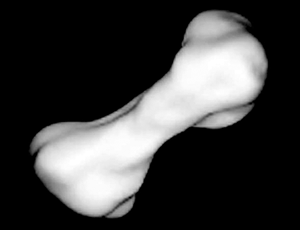Earth’s Big Bash
Tuesday, April 22nd, 2014April 22, 2014
The sky turned blood red. Heavy clouds of dust choked the atmosphere. Tsunamis thousands of feet high raced across Earth’s oceans, as the surface water boiled off. The entire planet shook for 30 minutes, triggering powerful earthquakes. The cause of this cataclysm was a massive asteroid about as wide as the state of Rhode Island that slammed into Earth 3.26 billion years ago. And in a remarkable piece of research, scientists from Stanford University in California have been able to reconstruct this event by studying tiny particles of rock about the size of the head of a pin.
The asteroid came down during an early period of Earth’s history called the Late Heavy Bombardment, which lasted from about 4.1 billion to 3.8 billion years ago. Earth, at this time, has been described as a “shooting gallery,” as large numbers of rocky bodies from the still-forming solar system pummeled the planet. Finding evidence from these impactors is difficult. Although the crater created by the asteroid in the study was some 300 miles (500 kilometers) across, it has long since vanished. It was erased by erosion and the movement of the tectonic plates that make up Earth’s outer crust. What remains from the impact are spherules, solid spheres created when rock vaporized and thrown into the atmosphere by the impact falls back to Earth.
Geologist Donald Loew discovered the spherules about a decade ago in South Africa at a site known as the Barberton greenstone belt. There, the spherules cover some of the oldest rocks on Earth. To reconstruct the size of the asteroid, Loew and his co-author, physicist Norman Sleep, used information about the thickness and chemical composition of the spherule layer. Then they created a computer model to reconstruct the impact, the first model created in such detail for an event older than 3 billion years. The scientists were surprised by the results. “We knew it [the impact] was big, but we didn’t know how big,” Loew said.
The asteroid thought to have crashed into Earth 3.26 billion years ago dwarfed the asteroid linked to the extinction of the dinosaurs 65 milion years ago. (American Geophysical Union)
The scientists found that the asteroid was from 22 to 37 miles (37 to 59 kilometers) in diameter. That’s three times as wide as the asteroid linked to the extinction of the last of the dinosaurs 65 million years ago. When the asteroid hit Earth, it was traveling at a speed of 44,000 miles (71,000 kilometers) per hour. That initial impact created seismic waves as strong as those of a magnitude 10.8 earthquake, larger than any earthquake ever recorded.
The impact, the scientists said, may have had significant effects. It could have wiped out many of the microscopic, single-celled organisms that comprised life on Earth at the time, thus altering the course of evolution. The impact may also have broken up or shifted the direction of some of Earth’s tectonic plates, triggering the beginning of the current system of plate movement.
Additional World Book articles:
- The Early Earth (a Special Report)
- Stones from Space (a Special Report)
- When Worlds and Comets Collide (a Special Report)



